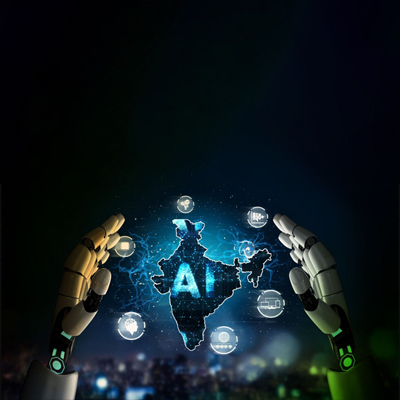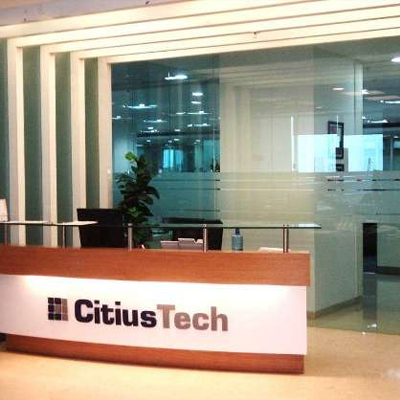Unleashing the Power of Generative AI: A Game-Changer for IT Professionals

Rahul Rai, Global Service Management Leader and ERP Projects, Syngenta Group
In recent years, the field of artificial intelligence (AI) has witnessed remarkable advancements, from traditional machine learning to sophisticated deep learning algorithms. One of the latest breakthroughs in AI is Generative AI, which has gained significant popularity due to its potential to revolutionize various industries.
In this article, we will explore the evolution of AI, the rise of Generative AI, its implications for common people, students, and working professionals, key players in the field, real-world examples, and how to approach the transformation. We will also address the importance of security considerations when working with Generative AI.
“Striking the right balance between proof-of-concepts and strategic collaboration is pivotal for maximizing the business impact of Generative AI adoption. This delicate equilibrium ensures effective implementation and tangible results in the dynamic landscape of artificial intelligence.”
Evolution of Artificial Intelligence and Generative AI
Artificial Intelligence (AI) is a field of computer science that focuses on creating intelligent machines capable of performing tasks that typically require human intelligence. Machine Learning (ML) is a subset of AI that enables computers to learn from data and improve their performance without explicit programming. Deep Learning is a subfield of ML that uses artificial neural networks to simulate human-like decision-making processes.
Large Language Models are advanced AI models trained on vast amounts of text data, capable of generating human-like text. These advancements have paved the way for the emergence of Generative AI, which combines the power of large language models with creativity and problem-solving capabilities.
Real-world examples of Artificial Intelligence, Machine Learning, and Deep Learning
AI in Customer Service: Many companies are using AI-powered chatbots to provide automated customer support. These chatbots use natural language processing (NLP) algorithms to understand customer queries and provide relevant responses, improving response times and customer satisfaction.
ML in Fraud Detection: Financial institutions utilize ML algorithms to detect fraudulent activities. By analyzing patterns and anomalies in transaction data, ML models can identify suspicious transactions and flag them for further investigation, helping prevent financial fraud.
Deep Learning in Image Recognition: Deep Learning models, such as convolutional neural networks (CNNs), have revolutionized image recognition. Applications like facial recognition, object detection, and autonomous vehicles rely on CNNs to accurately identify and classify images, enabling advanced visual capabilities.
AI in Personalized Recommendations: Online platforms like Netflix and Amazon use AI algorithms to provide personalized recommendations to users. By analyzing user preferences, browsing history, and similar user behaviour, AI models can suggest relevant movies, products, or content tailored to individual preferences.
These examples showcase how AI, ML, and Deep Learning are being applied in real-world scenarios, providing practical benefits and driving innovation across various industries. IT professionals can leverage these technologies to enhance their work, automate processes, and deliver more efficient and intelligent solutions.
The Popularity and Implications of Generative AI
Generative AI is gaining popularity due to its ability to generate new content, such as text, images, and music, that closely resembles human-created content. This technology has far-reaching implications for various individuals, including kids, students, senior citizens, working professionals, and IT specialists. For kids, it can foster creativity and learning by providing AI-powered tools that generate story prompts, characters, and artwork suggestions, encouraging artistic expression and imagination. Additionally, Generative AI can support personalized learning experiences, adapting teaching methods, and generating practice exercises tailored to a child's individual needs.
For senior citizens, Generative AI can assist with memory-related challenges, provide personalized health monitoring, and offer social interaction through AI chatbots and virtual companions, reducing feelings of loneliness and enhancing overall well-being. Students can leverage Generative AI to assist in generating creative ideas for projects, while working professionals can automate repetitive tasks, improving productivity and enabling them to focus on more strategic activities. Additionally, Generative AI can empower IT professionals to streamline development processes, enhance code generation, and improve knowledge sharing within organizations.
Key Players in Generative AI
Several organizations have made significant contributions to the field of Generative AI. Microsoft, OpenAI, Amazon, Google, and others have developed cutting-edge technologies and large language models. OpenAI's GPT-3.5 and 4, a renowned large language model, has demonstrated remarkable capabilities in generating human-like text and has become a benchmark in the industry. Generative AI also encompasses modality, which refers to the ability of AI models to generate content in different forms, such as text, images, or even music. For instance, AI models can generate realistic images from textual descriptions or create music compositions based on a given theme. Many Applications are using Generative AI offerings, say for example Myntra.
Myntra, an Indian fashion e-commerce platform, has utilized Generative AI in its operations. Myntra has employed Generative Adversarial Networks (GANs), a type of Generative AI, to enhance its fashion recommendation system. GANs analyze user preferences, browsing history, and other data to generate personalized fashion recommendations for customers. By leveraging Generative AI, Myntra aims to provide a more tailored and engaging shopping experience for its users, helping them discover relevant fashion items and make informed purchasing decisions.
Adoption of Generative AI and Business Impact
When considering the adoption of Generative AI, organizations must strike a balance between exploring proof-of-concepts (POCs) and collaborating closely with businesses to identify pain points and understand how this technology can be leveraged to increase sales, profits, and improve user experience. By aligning Generative AI with business objectives, organizations can achieve tangible results and drive innovation. Establishing Centers of Excellence (CoEs) can be a strategic approach, where IT teams and business professionals collaborate to prioritize ideas based on ROI and work towards fast go-to-market (GTM) implementation.
Real-World Examples of Generative AI
Generative AI has found applications in various domains. For instance, automatic monitoring systems powered by Generative AI can detect anomalies and patterns in large datasets, enabling timely intervention. In the context of Agile Ceremonies and DevOps, the Work Units Estimator leverages Generative AI to estimate the effort required for specific tasks, aiding in project planning and resource allocation.
Sentiment analysis on incidents can be automated using Generative AI, enabling organizations to gain insights from customer feedback and improve their products or services. Code generation and knowledge repositories are other areas where Generative AI can enhance productivity and knowledge sharing among IT professionals.
Approaching the Transformation
To fully embrace the potential of Generative AI, organizations should consider conducting hackathons that bring together business professionals, IT experts, architects, and AI/ML specialists. These collaborative events can help identify business problems that can be solved using Generative AI. Additionally, providing training sessions on Generative AI, Python, and different algorithms can spark innovative ideas and encourage professionals to think creatively about how this technology can be harnessed to address business challenges.
Establishing Centers of Excellence (CoEs) can further facilitate the transformation by enabling efficient idea prioritization and implementation based on ROI.
Security Considerations
While Generative AI offers immense potential, it is essential to establish robust design guidelines and consider security aspects to protect sensitive and proprietary information. Organizations must exercise caution when sharing data with large language models and ensure appropriate measures are in place to safeguard confidentiality, integrity, and privacy.
Conclusion
Generative AI represents a significant milestone in the evolution of artificial intelligence. Its ability to generate creative and human-like content opens new possibilities across various industries. By understanding the evolution, implications, key players, and real-world examples, and approaching the transformation strategically, IT professionals can unlock the full potential of Generative AI while ensuring security and privacy considerations are addressed. Embracing this technology can empower IT professionals to drive innovation, streamline processes, and enhance productivity in the ever-changing digital landscape.
The journey into industry
Rahul Rai is an accomplished professional recognized as the Al Transformation Leader of the Year, securing accolades such as the Nationwide Awards 40 Under 40, ITNEXT100 CIO Award (2018), INSIGHTS CXO Award (2021, 2022), and the Innovative CIO Award (2022). Currently working as Global SAP Service Manager and ERP Projects Leader at Syngenta Group, previously held roles like Head of Reporting Factory, Product Manager, Application Lead, Service Delivery Manager overseeing diverse portfolios, including Generative AI, Reporting and Analytics, SAP, Non-SAP technologies.
With a proven track record, Rai has pioneered transformative initiatives and collaborative on establishment of DevOps and Agile/Scrum methodologies for SAP applications. His leadership extends to driving competency in Generative AI, Robotics Process Automation (RPA) for business process automation, setting up a Reporting Factory, and leveraging Lean Six Sigma for operational excellence.
As a visionary, Rai explores cutting-edge technologies, including Sentiment Analytics, Digital Marketing, and Descriptive/Predictive Analytics. Notably, he delves into the realm of Generative AI and identifies innovative ChatGPT use cases within the organization.
His strategic mindset, coupled with a commitment to technological advancement and operational efficiency, positions him as a distinguished leader in the realm of Global Service Management and ERP projects.
.png)







